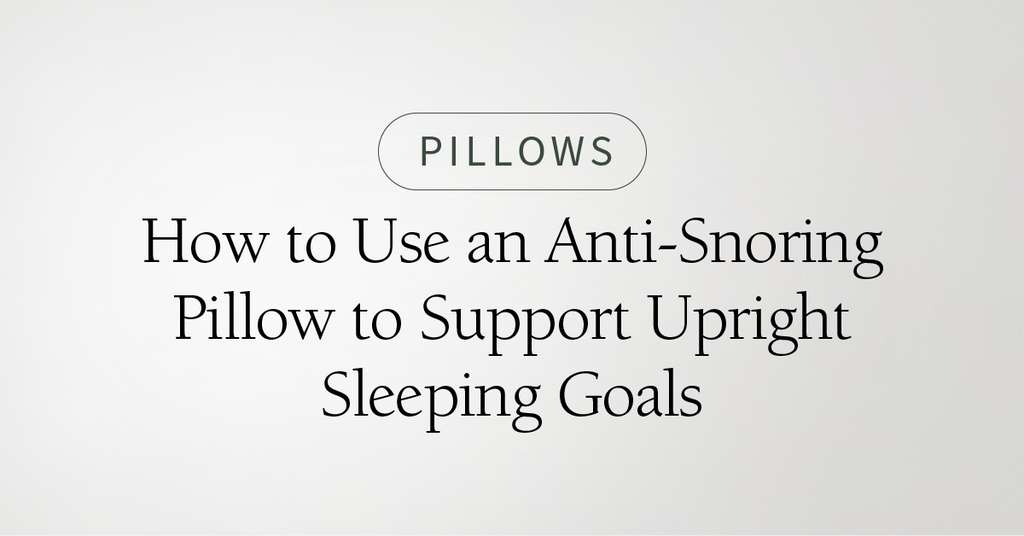How to Use an Anti-Snoring Pillow to Support Upright Sleeping Goals

So you’re ready to give upright sleeping a try—great choice. Whether you’re doing it to reduce snoring, ease acid reflux, or simply wake up without neck pain, the right pillow can make or break your success.
Let’s walk through how to actually use an anti-snoring pillow (like the Snorinator) to get the most out of your new sleep setup.
Disclaimer: This is not medical advice. Always consult a doctor before making any medical-based decisions.
Why Upright Sleep Works
When you sleep flat, gravity can cause your tongue and soft tissues to collapse backward, blocking airflow. That’s where the snoring starts. Sleeping upright—especially at the right angle—helps keep your airway open and your breathing steady.
This method is especially helpful for:
- Chronic snorers
- People with acid reflux or GERD
- Pregnant sleepers
- Those dealing with nasal congestion or colds
But upright sleep isn’t just about piling pillows behind your head. Without full-body support, you risk slouching or straining your neck. That’s where a dedicated anti-snoring pillow like the Snorinator comes in.
Step-by-Step: Using The Snorinator for Upright Sleep
Position Your Body
Sit back into The Snorinator so that your back rests against its angled structure. Your hips should be lower than your shoulders. This position—set at a 66° incline—is modeled after the medically recommended High Fowler’s position for optimal airway and lung function.
Nestle Into the Head Nest™
The Snorinator’s signature hinged cushions form a supportive cradle for your head. This keeps you from rolling to the side or tipping your chin forward—both common culprits for disrupted breathing and neck pain.
Use the Fitted Pillowcase
The Snorinator’s custom-fitted pillowcase keeps everything in place, preventing slippage during the night. Bonus: it’s made from breathable, moisture-wicking fabric that enhances airflow and cooling.
Adjust Gradually
Sleeping upright can feel strange at first. Try easing into it with a short nap or watching TV from your upright setup before committing to a full night.
More Tips for Anti-Snoring Success
Use Breathable Bedding
Avoid heavy comforters or heat-retaining fabrics. Opt for moisture-wicking sheets and lightweight blankets to help regulate body temperature.
Keep Your Neck Relaxed
Avoid stacking extra pillows on top, which can push your chin toward your chest. Let your neck rest naturally against the contoured support.
Stay Hydrated
Dry airways are more prone to vibration (aka snoring). Keep a glass of water nearby and drink plenty of fluids throughout the day.
Maintain a Sleep Routine
Just like any healthy habit, consistency matters. Try to go to bed and wake up at the same time each day to help your body adapt to this new sleep position.
Long-Term Benefits of Upright Sleeping with The Snorinator
Beyond immediate snoring relief, upright sleeping can also support:
- Better digestion (especially after dinner)
- Reduced nighttime reflux
- Improved circulation
- Lower risk of neck and shoulder strain
The Snorinator’s ergonomic design and high-density memory foam construction offer reliable support that adapts to your body over time, making it easier to stick with upright sleep night after night.
Switching to upright sleeping isn’t just about fighting snoring—it's about changing your relationship with sleep entirely. With the right tools and setup, it can be incredibly comfortable, even luxurious.

